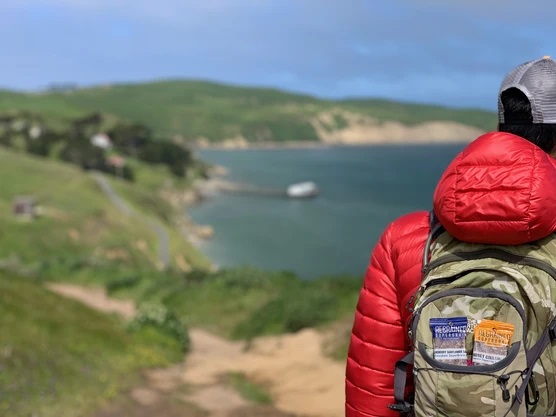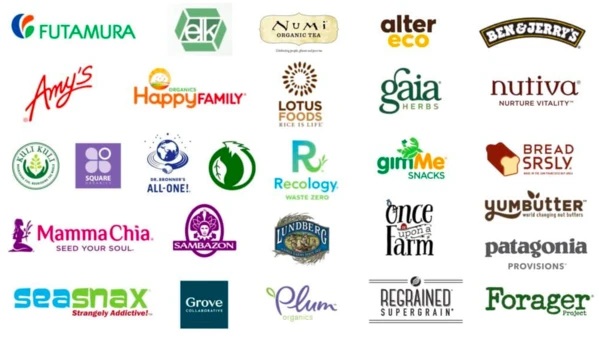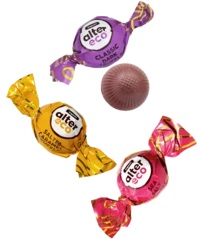April 26, 2019 by dev_team
ReGrained Presents: The UpCyclis
Why You Should Be Optimistic About Compostable Packaging
by Dan Kurzrock April 25, 2019
Original post at: ReGrained Presents: The UpCyclist

Optimism about packaging in today’s single-use culture can feel hard to reach. Rather than crumple up our dreams of a more sustainable future and toss them out the window, we’ve always felt inspired to find a better way. Cars aren’t going away, but they can become electric. Industry is here to stay, but factories can be run on natural gas and solar. Single-use packaging has become a staple of consumer culture, but we can make it better.
We acknowledge the problem but are committed to participating in the solution. This is the spirit behind our pioneering of compostable films and ultimately weathering its challenges. While our temporary switch to conventional films can feel disheartening, it is decidedly a “slow down to speed up” tactic.
To be sure, we faced a setback, but we’re not feeling pessimistic in the slightest, and neither should you. We’re feeling more energized than ever before. One big reason why is that we are not alone in our quest our commitment. With the OSC2 packaging collaborative, we’re among peers committed to solutions. With Elk Packaging we have a mission-aligned, strategic packaging supplier.

Elk’s sustainability initiative is spearheaded by Jeanne Cloutier, one of the unsung heroes of sustainable packaging innovation. Jeanne is a wealth of knowledge, drawing from years of practical experience on both the brand and packaging manufacturer side. Her technical chops and operational tenacity have been instrumental in moving the industry forward. If Jeanne were to teach a course on the future of packaging, we would sign up.

This Earth Week, we wanted to share some of Jeanne’s insights with you as a short-format interview. The bottom line is that there are a lot of reasons to feel optimistic right now. After reading this, we not only hope that you’ll agree, but that you’ll feel inspired to join us in action.
Any questions? Hit us up and we’ll cover them in future posts!
Jeanne, tell us a bit about yourself and how you got into the world of sustainable packaging?
My background is in supply chain management. I used to be a buyer for a few different brands in the natural food space. In these roles, I got to see up close what large amounts of packaging looked like before it was used to temporarily hold product before ultimately ending up in the landfill after being used once. When I was at Alter Eco, we realized that our annual packaging purchase for one of our categories was over a mile high if you stacked the packages, empty!
On a personal level, what really got me motivated was living in developing countries over a decade ago. I saw the trash that I created burned in front of me and literally had to face the mess that I had made with my choices. As a packaging buyer, I knew that I held power to create change, and if what we needed didn’t exist, we simply needed to invent it. So, we that’s what we did, and now I’m bringing what we learned to the rest of the industry.
After leading the compostability charge at Alter Eco you helped co-found the OSC2 Packaging Collaborative. Why did you feel a coalition of brands tackling this issue is important?
Working on compostable packaging at Alter Eco was an isolating experience. I was told “no that won’t work” over and over from suppliers to packers to labs and had to overcome functional, economic and marketing claim challenges over the span of 5 years. These were all elements I knew could hinder other efforts, especially those who didn’t have the amazing support I did from Alter Eco’s founders.
There is no real precedent for what we are doing at OSC2, save for the very dawn of the petroleum-based plastic packaging age 60 years ago. We take for granted the fact that petroleum-based packaging is effective at maximizing shelf-life, cheap, and easy to work with. In fact, it is over-engineered to overprotect a brand’s product and carries the unintended consequence of literally lasting forever, while harming life outside of landfills. Considering this, I think that it is insane that we are not required to make labeling claims for the negative elements of current packaging! “This wrapper will not decompose for 1,000 years and has unknown consequences for life on earth.”
Compostable packaging requires a shift in mindset. We must think of the package as an ingredient itself, the last one in your product. This ingredient needs to match the barrier properties of the product, and also survive downstream logistics. At the same time, these sustainable materials are designed to break down, not last forever. This needs to be taken into consideration in the life of the product.
Can you imagine being disappointed in a banana peel that turned brown “too early”? We have the ability to accept that packaging is not meant to last forever, but cognitively our wires are stuck in a divergent position. When thinking about compostable packaging, we “need” it to look just like petroleum based (forever) packaging, and also need it to “go away” when we want it to. One can’t have it all.
Taking this all into consideration, the nexus of our group at OSC2 is that there is a shortage of packaging operations skills at most brands that we can collectively fill. We have simply been spoiled by this “forever” packaging and have never needed to deeply consider all of the different aspects that go into essentially replicating nature, including our expectations. We’re here to provide resources and create a community to effect change.
What are some of the best materials out there today?
Hands-down it is Futamura’s NatureFlex line. They make a cellulose product from North American sustainably managed forests and it works well in laminations as well as monolayers and prints great. Cello is our “original” packaging material and was widely used before petroleum-based plastics came into play in the 1950s.
There is a lot of headway being made in PHA as well, a material are known to degrade in marine and anaerobic environments. We expect to hear a lot about these in the near future for flexible laminations.
Lastly, commercially compostable PLA materials are having a heyday as they are the low-cost darling of sustainable films. Recent progress has been made in very large scale non-GMO sources, as well as achieving amazing barrier improvements.
What applications are the currently available materials best for?
Ideally, they are all best for temperature controlled dry goods and confectionary items, followed by stable commodities (think rice) and fast moving, high-value small format items.
What are some of your favorite examples of successful commercialization of compostable films?
Alter Eco truffle wrappers, because it “only” took us a year and a half to qualify and have had zero issues in the market since 2012!

Guayaki pioneered the use of compostable films for their loose leaf tea line and have been in them for well over a decade. They don’t get enough credit for accepting all the common reasons folks are scared away: increase in cost, a slight increase in spoilage (meaning occasional bag failure), and limited marketing claims. They did it anyway, which is exactly the right leadership and message to other brands and they are as popular as ever.
We are also seeing successful commercialization in tea overwraps, bakery items, grains, microwave popcorn (!), coffee beans, chips, ballpark peanuts, and feminine hygiene products among others.
How have you seen the materials improve since you started focusing on sustainable packaging technologies?
I’ve seen improvement both in functionality, breadth of offerings, and offerings that batter match conventional analogs. Also, there have been improvements in downgauging (making the packaging thinner), which is key to achieving ASTM D6400, the compostability standard.
What is most misunderstood about compostable films in your opinion?
Unfortunately, there are a lot of misconceptions around environmental marketing claims. Just because the materials are certified compostable (Commercial or Home) it doesn’t mean that certification carries over to a finished, multilaminate structure with inks, adhesives, and coatings…even if all components are certified! The entire structural recipe is considered a “novel item” which needs to be re-tested in order to make the compostability claim, mainly due to disintegration.
This is very disappointing to folks who are raring to go and can be a conversation killer in product development meetings due to the uncertainty of testing, and or timeline of execution. Certification is not impossible by any means, but it only draws out transitions or product launches.
What are you most excited about right now in the world of sustainable packaging, whether or not it is commercially available?
On the demand side, I am loving that the sense of urgency has finally arrived! That we realize we need to change what we are doing as brands and as consumers. Folks finally get that their packaging will outlive their teeny consumption experience by a thousandfold.
It’s refreshing to work with brands like ReGrained who are leading the charge by putting action and money behind doing what’s right all the way down to the last iota of their responsibility, packaging.
What are the top actions food manufacturers/brands can take action to move the needle on packaging progress?
Realize that this is not a fad, and compostable packaging is not going away (except after it is composted). As a start, get educated in the form of joining the OSC2 packaging collaborative. Put talent and resources into understanding the materials and fitness for use. Align with upstream materials suppliers and manufacturers and ask to be provided with sustainable packaging choices.
And finally, how about consumers?
Arm yourself with science-based information for the full spectrum of topics: materials themselves, ecology, waste management issues. Don’t rely on bite-sized information from Instagram alone for your education.
For the rest, keep true to your values and vote with your dollars and your votes.
Keep questioning, always question! My number one question is always: “Do I really need that?”
